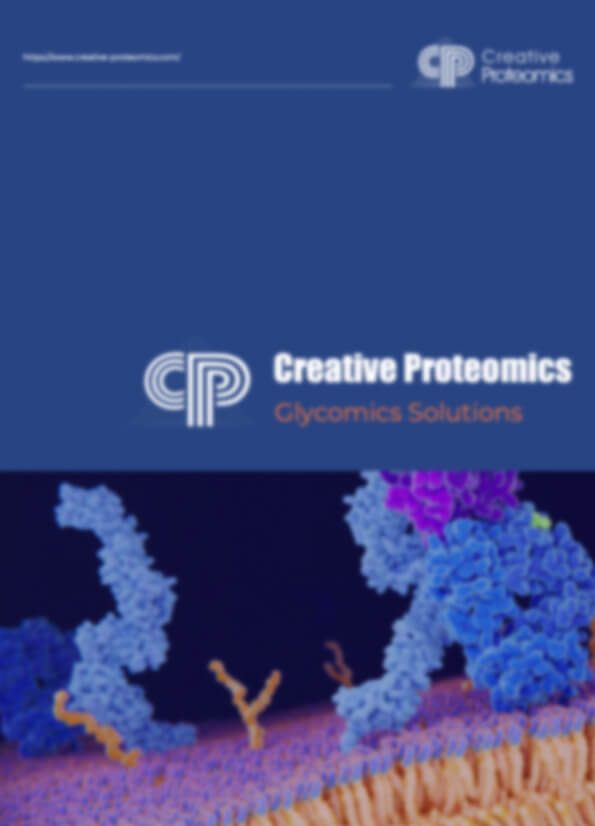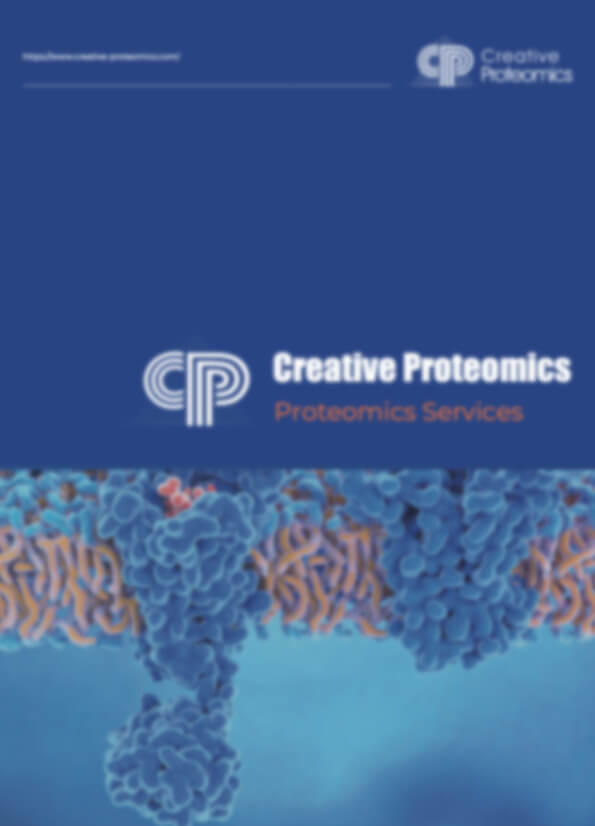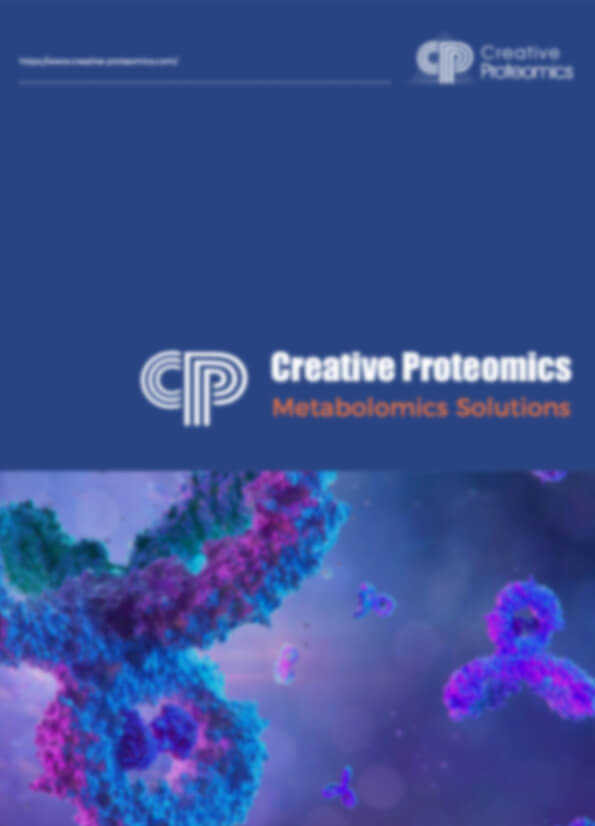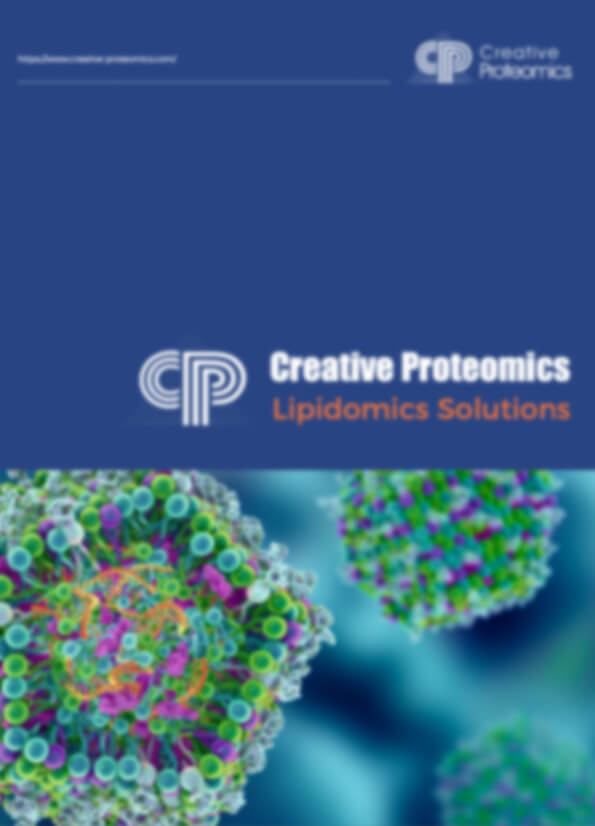- Service Details
- Demo
- FAQ
- Publications
What is Triple Quadrupole Mass Spectrometry?
Triple Quadrupole Mass Spectrometry (TQMS) is widely employed in the fields of chemistry, biology, and environmental science for the identification and quantification of various chemical compounds. By utilizing a configuration of three quadrupole mass analyzers, TQMS significantly enhances the ability to analyze complex mixtures with high sensitivity and specificity.
Quadrupole Mass Analyzers
A quadrupole mass analyzer comprises four parallel metal rods arranged in a square formation. When a direct current (DC) voltage is applied to the rods, an electric field is generated that influences the movement of ions. By introducing alternating current (AC), or radio frequency (RF) voltage, into the system, it becomes possible to create oscillatory movements that allow only ions of specific mass-to-charge ratios (m/z) to pass through while filtering out unwanted ions.
The basic functioning of a quadrupole can be summarized as follows:
- Ionization: Ions generated from the sample enter the quadrupole.
- Filtering: The RF and DC voltages are modulated to allow specific ions to traverse while excluding others.
- Detection: Selected ions are directed towards a detector for quantification and analysis.
Single quadrupole mass spectrometers can perform qualitative and quantitative analysis but are often limited in detail when it comes to complex mixtures.
Tandem MS
To enhance the analytical capabilities of single quadrupole systems, tandem mass spectrometry (MS/MS) comes into play. In this setup, the first mass analyzer selects precursor ions, which are then fragmented in a collision cell through interaction with a neutral gas. The resulting product ions are subsequently analyzed by a second mass analyzer.
This two-step process allows for:
- Increased specificity: By focusing on the fragmentation patterns, researchers can obtain detailed structural information about the analyte.
- Enhanced sensitivity: The ability to target specific ion fragments means lower concentrations can be detected and quantified accurately.
Triple-Quadrupole MS
The triple-quadrupole mass spectrometer integrates two quadrupole mass analyzers with a collision cell in between. This configuration was pioneered by Christie G. Enke and Richard A. Yost in the late 1970s and has since become a cornerstone in mass spectrometric analysis.
Operational Mechanism
- Ion Selection: The first quadrupole (Q1) filters the ions of interest from the sample.
- Fragmentation: The selected ions are directed into a collision cell (Q2), where they undergo fragmentation by colliding with an inert gas (e.g., argon).
- Product Ion Selection: The resulting fragments are then analyzed by the third quadrupole (Q3), which can either scan for all product ions or monitor specific ones.
This configuration allows for unparalleled sensitivity and specificity, making TQMS a preferred choice for applications requiring trace analysis, such as in proteomics and metabolomics.
Pharmacokinetics and Drug Development
- Drug Metabolism Studies: TQMS is employed to study the metabolism of drugs within biological systems. By analyzing the metabolites formed after drug administration, researchers can assess the pharmacokinetics (PK) of a compound, including absorption, distribution, metabolism, and excretion (ADME) profiles. This information is critical for optimizing drug formulations and dosing regimens.
- Therapeutic Drug Monitoring (TDM): TQMS enables the quantification of therapeutic drugs in patient samples, helping clinicians monitor drug levels to ensure efficacy and safety. This is particularly important for drugs with narrow therapeutic indices, where precise dosing is crucial to avoid toxicity or sub-therapeutic effects.
Environmental Monitoring
- Detection of Environmental Pollutants: TQMS can detect trace levels of environmental contaminants, including heavy metals, pesticides, and industrial chemicals, in air, water, and soil samples. This capability is vital for environmental risk assessments and regulatory compliance.
- Ecotoxicology Studies: Researchers utilize TQMS to study the effects of contaminants on ecosystems. By analyzing the concentration of pollutants in biological samples from aquatic or terrestrial organisms, scientists can assess the impact of environmental exposure on health and reproductive success.
Food Safety and Quality Control
- Contaminant Analysis: TQMS is used to detect pesticide residues, mycotoxins, and other harmful contaminants in food products. The high sensitivity of the technique allows for the detection of these substances at trace levels, ensuring consumer safety and regulatory compliance.
- Nutritional Analysis: TQMS can also be employed to analyze the composition of food products, including the identification and quantification of vitamins, amino acids, and fatty acids. This information is essential for nutritional labeling and product formulation.
- Authenticity Testing: TQMS can help verify the authenticity of food products by detecting adulterants or confirming the presence of specific compounds. This is especially important in high-value products such as wine, olive oil, and honey, where authenticity directly impacts market value.
Features of Triple Quadrupole Mass Spectrometry
- High Sensitivity and Specificity: TQMS excels in detecting trace amounts of analytes, ensuring precise quantification and identification in complex matrices.
- Enhanced Dynamic Range: It allows simultaneous detection of both abundant and low-abundance compounds, providing comprehensive analyses without compromising data quality.
- Tandem Mass Spectrometry (MS/MS) Capability: The tandem configuration enables detailed structural characterization of compounds through fragmentation, offering insights into molecular structure.
- Fast Data Acquisition: Rapid scan speeds facilitate high-throughput screening, making it ideal for time-sensitive applications such as drug development and clinical diagnostics.
- Robustness and Reliability: TQMS systems maintain stable performance across various sample matrices, ensuring consistent results.
- User-Friendly Software: Accompanied by advanced software tools for streamlined data acquisition and analysis, TQMS simplifies the interpretation of complex mass spectra.
- Customizable Method Development: Users can optimize analytical methods to enhance sensitivity and specificity for their specific analytes.
- Versatile Ionization Options: Compatible with multiple ionization sources, such as ESI and APCI, TQMS offers flexibility for diverse sample types.
What We Can Offer?
Proteomics
TQMS is utilized for the analysis of proteins and their functions, offering insights into biological processes and disease mechanisms. Key applications include:
- Protein Quantification: TQMS allows for the precise quantification of proteins in biological samples, which is essential for biomarker discovery and validation. By monitoring specific peptide fragments corresponding to target proteins, researchers can accurately measure protein levels, aiding in understanding disease states or physiological conditions.
- Post-Translational Modifications (PTMs): Proteins often undergo various modifications after translation, such as phosphorylation, glycosylation, and ubiquitination, which can significantly impact their function. TQMS can help identify and quantify these modifications by analyzing specific fragmentation patterns, providing crucial information about protein activity and regulation in different biological contexts.
- Identification of Protein-Protein Interactions: TQMS can be employed to study interactions between proteins. By analyzing the fragments generated from protein complexes, researchers can gain insights into the dynamics of protein interactions, which are critical for understanding cellular signaling pathways.
Metabolomics
TQMS plays a significant role in metabolomics, the comprehensive study of small molecules (metabolites) within biological systems. Its applications in metabolomics include:
- Metabolite Profiling: The high sensitivity of TQMS enables the detection of low-abundance metabolites in biological samples, such as blood, urine, or tissue. This profiling is essential for identifying metabolic changes associated with diseases, drug responses, or environmental exposures.
- Pathway Analysis: By quantifying metabolites associated with specific metabolic pathways, researchers can gain insights into the biochemical processes occurring within an organism. TQMS facilitates the mapping of metabolic pathways, which can help identify potential therapeutic targets for diseases.
- Biomarker Discovery: TQMS is instrumental in discovering novel biomarkers for various diseases, including cancer, diabetes, and cardiovascular disorders. By comparing metabolite profiles between healthy and diseased states, researchers can identify key metabolites that may serve as indicators of disease progression or treatment efficacy.
Sample Requirements for Triple Quadrupole Mass Spectrometry
| Sample Type | Recommended Volume | Comments |
|---|---|---|
| Biological Samples | ||
| - Blood | 100 µL - 1 mL | Plasma or serum samples are preferred. |
| - Plasma | 50 µL - 500 µL | Centrifuged to remove cells. |
| - Urine | 10 µL - 500 µL | Dilution may be necessary for concentrated analytes. |
| - Tissue Extracts | 50 µL - 1 mL | Requires proper extraction methods. |
| - Cell Lysates | 50 µL - 500 µL | Ensure proper lysis and centrifugation. |
| Environmental Samples | ||
| - Water | 10 mL - 100 mL | Filter to remove particulates. |
| - Soil | 1 g - 10 g (in solution) | Requires extraction into liquid for analysis. |
| - Air (adsorbent tubes) | N/A | Sample collection on sorbent materials. |
| Food and Beverage Samples | ||
| - Solid Foods | 1 g - 10 g (in solution) | Requires homogenization and extraction. |
| - Liquids (e.g., juices) | 10 mL - 100 mL | Filtration may be required. |
| Pharmaceutical Formulations | ||
| - Liquid Formulations | 50 µL - 1 mL | Direct analysis possible. |
| - Solid Dosage Forms | 1 g - 5 g (in solution) | Requires proper dissolution. |
Technical Specifications
- Mass Range: TQMS covers a broad dynamic range, typically from 10 to 3,000 m/z, enabling the analysis of various compounds, from small organic molecules to larger biomolecules such as peptides and proteins.
- Resolution: While TQMS does not achieve the ultra-high resolutions of Orbitrap or FT-ICR systems, it still provides sufficient resolution for effective differentiation of closely related analytes, generally around 0.5 to 1 Da, which is suitable for most quantitative applications.
- Sensitivity: With advanced ion filtering and multiple reaction monitoring (MRM) capabilities, TQMS systems demonstrate exceptional sensitivity, allowing detection limits in the low femtomole range. This is critical for trace analysis in complex biological and environmental samples.
- Scanning Modes: TQMS supports multiple scanning modes, including Single Ion Monitoring (SIM), Multiple Reaction Monitoring (MRM), and Full Scan MS. This flexibility enables comprehensive detection of both targeted and untargeted compounds, accommodating a wide array of analytical needs.
- Data Acquisition Rate: The system is capable of rapid data acquisition rates, typically up to 1000 MRM transitions per second, ensuring high throughput and efficiency in routine analyses without compromising data quality.
- Collision Cell Technology: TQMS features advanced collision cell technology that enhances fragmentation efficiency, enabling detailed structural characterization of analytes through MS/MS analysis.
- User-Defined Method Development: The software allows researchers to customize parameters for each analyte, optimizing collision energies and other settings to maximize sensitivity and specificity for targeted analysis.
What is The Difference Between Quadrupole and Triple Quadrupole?
| Feature | Quadrupole Mass Spectrometer | Triple Quadrupole Mass Spectrometer |
|---|---|---|
| Configuration | Single quadrupole | Three quadrupoles in tandem |
| Functionality | Basic qualitative and quantitative analysis | Advanced quantitative analysis with enhanced specificity and sensitivity |
| Scanning Modes | Single Ion Monitoring (SIM), Full Scan | Multiple Reaction Monitoring (MRM), SIM, Full Scan |
| Fragmentation Capability | Limited to single-stage mass analysis | Capable of MS/MS fragmentation for structural elucidation |
| Sensitivity | Moderate sensitivity | High sensitivity, especially for trace analysis |
| Dynamic Range | Moderate dynamic range | Wide dynamic range, suitable for a variety of concentrations |
| Applications | General applications in chemistry and biochemistry | Targeted analysis in proteomics, metabolomics, and environmental monitoring |
| Data Acquisition Rate | Slower data acquisition | Rapid data acquisition, capable of processing multiple transitions per second |
| Complexity of Analysis | Simpler analysis | More complex analysis, capable of differentiating closely related compounds |

PCA chart

PLS-DA point cloud diagram

Plot of multiplicative change volcanoes

Volcano Plot of Differential Proteins

Metabolite variation box plot

Pearson correlation heat map

Bar Chart of GO Enrichment for Candidate Proteins

KEGG Pathway Enrichment of Candidate Proteins
What types of samples can be analyzed using TQMS, and are there any specific preparation methods required?
Triple Quadrupole Mass Spectrometry is highly versatile and can analyze various sample types, including biological samples (like plasma, urine, and tissue extracts), environmental samples (such as soil and water), food products (including liquids and solids), and pharmaceutical formulations (both liquid and solid dosage forms).
Sample preparation is crucial for obtaining accurate results. For biological samples, it is recommended to use techniques such as centrifugation for plasma and serum separation. In environmental analyses, soil samples should be extracted into a liquid phase for effective detection. Additionally, food samples often require homogenization and proper extraction to ensure that analytes are in a suitable form for analysis.
How does TQMS ensure high sensitivity and specificity during analyses?
The sensitivity and specificity of TQMS stem from its unique operational design and capabilities. The use of multiple reaction monitoring (MRM) allows for the detection of specific ion fragments that are unique to target analytes, significantly reducing background noise and increasing the likelihood of detecting low-abundance compounds.
Additionally, the three quadrupole configuration permits enhanced ion selection and fragmentation. The first quadrupole selects precursor ions, which are then fragmented in the collision cell. The third quadrupole analyzes the resulting fragments, ensuring that only the relevant ions are measured. This meticulous process results in lower limits of detection and improved quantification accuracy, making TQMS ideal for trace analyses in complex matrices.
What are the limitations of TQMS compared to other mass spectrometry techniques?
While TQMS is powerful for targeted analysis, it has limitations compared to other mass spectrometry techniques. For instance, TQMS typically provides lower resolution than systems like Orbitrap or FT-ICR mass spectrometers, which can distinguish between compounds with very similar m/z values.
Moreover, TQMS is best suited for targeted analyses rather than comprehensive untargeted profiling. While it can analyze multiple compounds simultaneously, its strength lies in quantifying specific analytes rather than offering a full spectrum of all compounds present in a sample. Users seeking to identify a broad array of unknown compounds may benefit from coupling TQMS with other techniques or using high-resolution mass spectrometers for initial screening.
Can TQMS be used for quantifying metabolites in biological samples? What are the advantages?
Yes, TQMS is extensively used for quantifying metabolites in biological samples. One of the primary advantages of using TQMS for metabolomics is its ability to achieve high sensitivity and specificity, allowing for the detection of metabolites present at low concentrations.
Additionally, TQMS supports MRM, which enhances the quantification of specific metabolites by monitoring unique fragments. This capability enables researchers to accurately profile metabolic changes associated with disease states or drug responses, offering insights into biochemical pathways and potential therapeutic targets.
How do I optimize my TQMS method for a specific analyte?
Optimizing your TQMS method for a specific analyte involves several key steps:
- Ionization Source Selection: Choose an appropriate ionization technique (e.g., Electrospray Ionization (ESI) or Atmospheric Pressure Chemical Ionization (APCI)) based on the chemical properties of your analyte.
- Parameter Optimization: Adjust parameters such as collision energy, RF voltages, and ionization source settings to maximize sensitivity. Using software tools provided with TQMS systems, you can customize these parameters based on preliminary experiments.
- Standard Calibration: Create a calibration curve using standards of your analyte at various concentrations to ensure accurate quantification. This involves preparing standards and running them alongside your samples.
- Sample Preparation: Optimize sample extraction and preparation methods to enhance analyte recovery and minimize matrix effects. This could include methods like solid-phase extraction (SPE) or liquid-liquid extraction (LLE).
By thoroughly understanding these factors and iteratively refining your method, you can significantly enhance the performance of TQMS for your specific analytical needs.
NUDT22 promotes cancer growth through pyrimidine salvage and the TCA cycle.
Walter, M., Mayr, F., Hanna, B. M. F., Cookson, V., Mortusewicz, O., Helleday, T., & Herr, P.
Journal: Research Square
Year: 2022
https://doi.org/10.21203/rs.3.rs-1491465/v1
Untargeted metabolomics based prediction of therapeutic potential for apigenin and chrysin.
Cochran, C., Martin, K., Rafferty, D., Choi, J., Leontyev, A., Shetty, A., ... & Puthanveetil, P.
Journal: International Journal of Molecular Sciences
Year: 2023
https://doi.org/10.3390/ijms24044066
Cancer SLC43A2 alters T cell methionine metabolism and histone methylation.
Bian, Y., Li, W., Kremer, D. M., Sajjakulnukit, P., Li, S., Crespo, J., ... & Zou, W.
Journal: Nature
Year: 2020
https://doi.org/10.1038/s41586-020-2682-1










